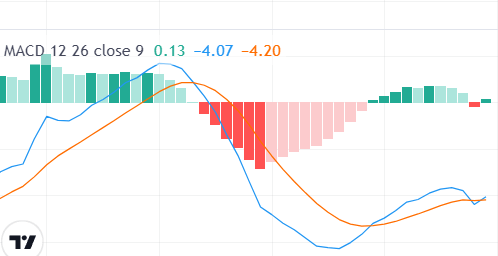In the world of financial markets, where precision and insight are paramount, the MACD (Moving Average Convergence Divergence) indicator stands as a stalwart ally for traders. This versatile and widely used tool has the potential to illuminate trends, signal changes, and guide decision-making processes. Join us as we delve into the intricacies of the MACD indicator, decipher its components, and unveil how it can be a game-changer in your trading endeavors.
Understanding the MACD Indicator
Decoding the Acronym
The acronym “MACD” breaks down into its three core components:
- Moving Average (MA): A foundational concept in technical analysis, moving averages smooth out price data to reveal underlying trends. They are calculated by averaging a set of prices over a specific period.
- Convergence: This refers to the trend-following aspect of the MACD. It is the phenomenon where two moving averages move closer together, indicating a potential trend continuation or reversal.
- Divergence: The divergence element of the MACD signifies potential shifts in the trend. It occurs when the MACD line and the signal line move apart, suggesting a potential trend reversal.
The Components
The MACD indicator comprises three components:
- MACD Line: This line represents the difference between two exponential moving averages (EMAs), typically the 12-period and 26-period EMAs. The MACD line’s movement showcases the momentum of a trend.
- Signal Line: Often referred to as the “trigger” line, the signal line is a 9-period EMA of the MACD line. It provides insights into potential shifts in the trend’s direction.
- Histogram: Derived from the MACD line and the signal line, the histogram visually represents the difference between the two. When the histogram is positive, it implies bullish momentum, while a negative histogram suggests bearish sentiment.
Unleashing the Power of the MACD Indicator
Spotting Trends and Reversals
One of the primary strengths of the MACD indicator lies in its ability to identify trends and potential reversals. When the MACD line crosses above the signal line, it generates a bullish signal, indicating a potential uptrend. Conversely, when the MACD line crosses below the signal line, a bearish signal emerges, suggesting a potential downtrend.
Diving into Divergence
The concept of divergence within the MACD indicator is a powerful tool for traders. Positive divergence occurs when the price of an asset forms a lower low, but the MACD indicator forms a higher low. This can indicate an upcoming trend reversal to the upside. Negative divergence, on the other hand, unfolds when the price forms a higher high while the MACD indicator forms a lower high. This may signal an impending trend reversal to the downside.
Fine-Tuning Entries and Exits
The MACD indicator also aids traders in pinpointing opportune moments to enter or exit a trade. As the MACD line and signal line intersect, traders can gauge potential entry points. When the MACD line crosses above the signal line, it may be a signal to buy. Conversely, when the MACD line crosses below the signal line, a sell signal could be on the horizon.
Incorporating MACD into Your Strategy
Timeframes Matter
The efficacy of the MACD indicator can vary based on the timeframe you choose. Shorter timeframes may generate more frequent but potentially less reliable signals. Longer timeframes, on the other hand, may offer more reliable signals but with fewer opportunities. Selecting the appropriate timeframe is integral to harnessing the full potential of the MACD indicator.
Combining with Other Indicators
While the MACD indicator is a robust tool, incorporating it with other indicators can enhance its effectiveness. Techniques like combining the MACD with the Relative Strength Index (RSI) or Bollinger Bands can provide a more comprehensive view of market conditions and increase the accuracy of your trading decisions.
Conclusion
The MACD (Moving Average Convergence Divergence) indicator is a beacon of insight in the intricate world of trading. Its ability to capture trends, identify reversals, and fine-tune entries and exits has cemented its place as a staple in the toolbox of traders worldwide. Whether you’re a seasoned investor or just stepping into the realm of trading, understanding and harnessing the power of the MACD indicator can empower you to make informed decisions in the ever-fluctuating financial landscape.
Embrace the MACD indicator as your steadfast companion on your trading journey, and let its nuanced insights guide you towards potentially more profitable outcomes.

